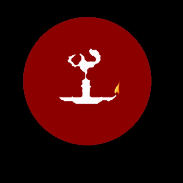Practical information
Time difference
The Indian Standard Time (IST) is 5 hours and 30 minutes ahead of UTC. There is only a one-time zone throughout the country: wherever you are in India, the time doesn’t change, which creates a luminosity difference throughout the country!
Electricity
The voltage in India is usually 220V and the power outlets comply with European standards, but it is not always the case: lots of hotels use Indian standard (with 3 large round plugs). Investing in a power adapter won’t be costly and will always be useful for your travels. Power cuts are common; they are often quite short but can last for a longer time. Furthermore, in India, each power outlet has a switch. If the outlet isn’t working, make sure that it is indeed switched on!
Phone and internet
When you make a call from your country to India, don’t forget to add 00 91 to the number of the person you are calling. Likewise, when you make a call from India to your country, you should add your country’s international code number.
If you have a mobile phone, you can discuss with your telephone provider to know about call options around the world. But be cautious! The network works well when you are in the city, but it is often not available in the countryside. It will be the same for the internet connection as it can be fast or very slow depending on the place you are at. You can use phone booths to make cheap phone calls: look for the sign I.S.D. (which stands for International Subscriber Dialing) to make an international phone call. Most mid-range to high-end hotels offer in-room calling, but try to avoid them as they typically charge high rates.
Languages
India boasts no less than 24 official languages (including English and Hindi) and more than 1,600 languages in total. From North to South, they can be divided into Indo-European languages (spoken by 74 % of the population) and Dravidian languages (spoken by 23 % of the population).
In North India, people mostly speak Hindi, Urdu, Bengali, or Punjabi, while in south India the most known spoken languages are Malayalam and Tamil. The Indian classical language is named Sanskrit. It is one of the oldest world’s languages and is spoken by few people.
Money and currency
India’s currency is the Indian rupee, made up of 100 paise. It is now possible to travel in and out of the country with rupees (until 25,000 INR without a credential, and above that the invoice of the exchange office which issued them). The money is available in notes of 10, 20, 50, 100, 500, and 2,000 rupees.
Make sure that the USD dollars or EUR euros you want to change are in a very good state: Indian people don’t accept damaged notes. When you exchange your money, you should also not accept torn Indian notes as you won’t be able to use them.
It is now possible to withdraw cash with your credit or debit card in most Indian big cities. However be mindful of additional bank charges and don’t forget the difficulties caused when the ATM swallows your card, especially if you are only staying there for one day! Finally, keep in mind that cash is harder to withdraw in small cities and most of the ATMs let you withdraw at most INR 10,000 each time.
Mailing system
The mailing system is quite efficient in India. To mail something from India to France usually takes approximately one week. The opening hours of the post offices in big cities are usually from Monday to Friday, from around 08:30 a.m. to 05:00 p.m.







